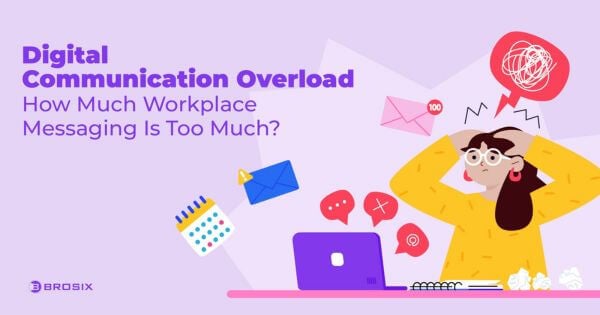Bullying isn’t new. But if you’re under the impression that it’s a phenomenon limited to the classroom or the playground, consider these statistics. A 2011 survey by UNISON of 60,000 people found that nearly 60% reported either experiencing or witnessing bullying on the job. A 2017 US Workplace Bullying Survey, on the other hand, confirmed these findings, with nearly 60% of US workers having been affected by bullying in some way. And these aren’t the only two reports – study after study offers similar, and eye-opening, statistics.
Bullying itself isn’t easy to define, especially when it happens in the workplace. That’s primarily because it can take many forms, including personal attacks like yelling, threats, and spreading rumors. Additionally, it can comprise manipulation techniques like isolation, sabotage, micromanagement, and unrealistic or impossible deadlines.
So how do you spot bullying? How does it effect victims and employers? And what can be done about it? Whether you’re a victim, or just a witness to it, read on to find out how you can more effectively confront workplace bullying.
How Do I Recognize Workplace Bullying?
Workplace bullying most often combines behavior or conduct (including nonverbal) that’s offensive or hurtful in nature, with the goal of threatening, humiliating, or intimidating the target. It can be carried out by one or more persons, against one or more persons, and is usually persistent or prolonged in nature. Over time, bullying is quite destructive of the target’s ability to successfully execute their tasks. Some behaviors of workplace bullies include:
- Consistently making snide or rude remarks
- Berating people instead of coaching them
- Stealing undue credit
- Excluding others from conversations, collaborations, or events
- Making threats
- Unfairly criticizing others
What Are the Effects of Workplace Bullying?
The effects of workplace bullying are multifold. Most noticeably, bullying affects job performance, as victims are often preoccupied with defending themselves, avoiding the destructive behavior, and constantly mulling over and planning how to deal with the situation. In the end, the results are troublesome and include:
- Difficulty making decisions
- The inability to focus on work-related tasks
- Decreased self-confidence
- Reduced productivity and overall performance
Worse, though, are the consequences that bullying can have on one’s health and well-being. For instance, bullying can cause:
- Stress
- Anxiety
- Depression
- Sleeplessness
- Panic attacks
- Increased blood pressure
What about the Effects on Employers?
When victims, as well as their coworkers, are unsure of how to raise the issue with management, lack support from HR, or fear losing their job if they report instances of bullying, the impact is detrimental not just to the victim, but to the overall work environment. This stress, coupled with the bullying itself, can create some major headaches for employers. A work environment prone to bullying could mean
- Increased absenteeism
- Expanded use of sick leave and health care claims
- Erosion of employee commitment
- Reduced productivity
- Higher turnover
Other costly consequences could include measures to train employees to both recognize and handle bullying, poor public publicity, and even lawsuits and legal fees.
So What Can I Do?
Unfortunately, there’s no quick or simple solution. But there are a number of steps which can be taken to address workplace bullying
- Empower Yourself – The more you know about bullying, the earlier you can recognize it. And earlier recognition of a problem often leads to a quicker solution. Moreover, by educating yourself on bullying, you’re less likely to blame yourself, and more likely to carefully consider all of the options at your disposal. For instance:
- How to manage the situation
- Reporting the incident(s) to HR
- Requesting a transfer
- Considering a job change
- Confront the issue head-on – In order to not only confront the issue successfully, but allow HR to take appropriate action, a variety of measures are needed.
- Keep a relevant record – Document any instances of bullying, including date, time, location, parties involved, and specific conduct. Keep the record relevant by updating it each time an instance of bullying occurs.
- Leave a paper trail – Use emails, chat histories, screenshots, and any other tools at your disposal to document any work that has been interfered with or sabotaged.
- Report the bullying – When you feel you have enough consistent documentation, report the incident(s) to a person of authority; sharing with them your records and paper trail.
- Seek outside help – Not trying to handle the situation alone is crucial. If possible, surround yourself with supportive people. As the consequences to your health can be severe, don’t hesitate to seek professional help or counseling. Finally, depending on the nature and severity of the bullying, it may be necessary to contact the local labor bureau or police, or even seek legal advice.
How Can Brosix Help?
Combatting bullying requires patience, perseverance, strength, and a wide network of support. Brosix Instant Messenger stands ready to do its part. While Brosix can’t confront the bully in a literal sense, it does provide a number of features and tools to help mitigate some instances of workplace bullying, as well as address the issue.
Consider cyberbullying – or the event a bully is using electronic means such text chats, chat rooms, or voice and video calls to threaten, intimidate, harass, or criticize a coworker. Brosix’s comprehensive administrative features control mean those very features utilized by the bully can be disabled until more concrete action is taken. What’s more, Brosix allows administrators to manage user contact lists, controlling who can chat with whom; effectively putting a stop to the bullying while a thorough review of the User Activity archives is completed, for example.
Brosix also provides a number of tools which support victims’ record keeping of instances of bullying. Screenshot affords the ability to document not only examples of work which may have been disrupted or sabotaged, but threatening or intimidating messages, as well. For two-fold documentation of written harassment, chat histories provide a written record of user communications; allowing for an even stronger case to be made.
Bullying in the workplace is never acceptable. By taking some time to educate yourself, though, you can more easily recognize it, better understand its effects, and take more effective measures to manage instances of workplace bullying.








